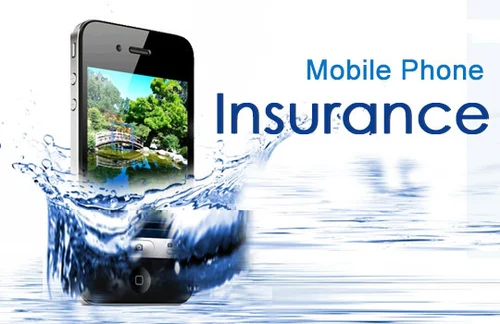Living in a mobile home offers freedom, affordability, and a unique lifestyle, but it also comes with risks. In the USA, mobile home insurance—sometimes called manufactured home insurance—is a key way to protect your home and belongings from disasters, theft, or accidents. Whether you’re parked in a mobile home park or on private land, having the right policy can save you from financial headaches. This article dives into what mobile home insurance is, why it’s important, the types of coverage available, and how to choose the best policy. We’ll also throw in some real-world examples, tips to save money, and common grammar mistakes to avoid when dealing with insurers. Let’s get started!
What is Mobile Home Insurance?
Mobile home insurance is a special type of insurance for manufactured or mobile homes, which are factory-built homes that can be moved to a site. It’s like homeowners insurance but tailored for the unique needs of mobile homes, which face different risks than traditional houses, like damage during transport or weaker structures. You pay premiums—usually monthly or yearly—and in return, the insurer covers costs if your home is damaged, your stuff is stolen, or someone gets hurt on your property.
In 2025, the average cost of mobile home insurance in the USA is about $700-$1,500 a year, depending on your location, the home’s value, and the coverage you pick. For example, mobile homes in high-risk areas like Florida or Texas, where hurricanes are common, can cost closer to $2,000 a year to insure, while homes in states like Arizona might cost $600.
Why Mobile Home Insurance Matters
Mobile homes are more vulnerable to damage than traditional houses because of their construction and exposure to weather. A single storm can destroy a $50,000 mobile home, and without insurance, you’d have to pay for repairs or a new home out of pocket. Mobile home insurance protects your investment, covering things like fire, wind damage, or vandalism.
It also covers liability. If a visitor trips on your steps and sues for $20,000 in medical bills, your policy’s liability coverage steps in. Plus, if you have a loan on your mobile home, your lender will likely require insurance, just like with a traditional mortgage. According to recent data, about 80% of mobile home owners in the USA have insurance, but many don’t have enough coverage to fully replace their home or belongings.
Types of Mobile Home Insurance Coverage
There’s different types of mobile home insurance policies, often labeled HO-7 for manufactured homes, but coverage varies by insurer. Here’s the main coverages you’ll find:
Dwelling Coverage
This pays to repair or replace your mobile home if it’s damaged by covered events, like fires, storms, or falling trees. It covers the structure—walls, roof, built-in appliances—but not the land or add-ons like decks unless specified.
Example: A hailstorm damages your roof, costing $8,000 to fix. Dwelling coverage pays, minus your deductible.
Personal Property Coverage
This covers your belongings—furniture, clothes, electronics—if they’re damaged, destroyed, or stolen. Most policies cover 50-70% of your dwelling coverage amount. So, if your home is insured for $60,000, you might have $30,000-$42,000 for personal property.
Example: A fire ruins your $3,000 couch and TV. Personal property coverage reimburses you, minus the deductible.
Liability Coverage
This protects you if someone gets hurt on your property or if you accidentally damage someone else’s stuff. It covers medical bills, legal fees, or damages, usually starting at $100,000.
Example: A neighbor’s kid breaks their arm playing in your yard and sues for $25,000. Liability coverage handles it.
Additional Living Expenses (ALE)
If your mobile home is unlivable due to a covered event, ALE covers costs like hotel stays or meals while you’re displaced.
Example: A flood forces you out for a month. ALE covers $2,000 in hotel and food costs.
Other Coverages
- Trip Coverage: Covers damage during transport if you move your mobile home.
- Flood Insurance: Standard policies don’t cover floods. You need a separate policy through the National Flood Insurance Program (NFIP) or private insurers.
- Hurricane or Windstorm Coverage: Key in states like Florida or Texas, this may be separate or have a higher deductible.
How Mobile Home Insurance Works
Getting mobile home insurance is similar to homeowners insurance but with some quirks:
- Get a Quote: You provide details about your mobile home—age, size, location, and features like tie-downs or skirting. Insurers assess risks, like living in a hurricane zone.
- Underwriting: The insurer calculates your premium based on the home’s value, location, and your claims history. This effects your cost.
- Policy Issuance: You get a policy detailing coverage, premiums, and deductibles. Deductibles are what you pay out of pocket before insurance kicks in—often $500-$2,000.
- Pay Premiums: You pay regularly to keep the policy active. Miss payments, and your coverage might lapse.
- File a Claim: If something happens, like a tree falling on your home, you file a claim. The insurer investigates and pays based on your coverage.
One thing to watch out for is underinsurance. If your home’s insured for $50,000 but replacing it costs $80,000, you’re on the hook for the difference. Check your coverage yearly to match rising costs.
Common Grammar Mistakes to Avoid
When filing claims or emailing insurers, grammar mistakes can make you look unprofessional. Here’s some common errors:
- Misusing “affect” vs. “effect”: A storm can effect your home’s value, but insurance affects your recovery. (Correct: affect is a verb, effect is a noun.)
- Subject-verb agreement: Premiums is based on your home’s age. (Correct: are because premiums is plural.)
- Missing hyphens: A 20 year old mobile home costs more. (Correct: 20-year-old mobile home.)
- Using “like” instead of “such as”: Disasters like fires or theft are covered. (Correct: Disasters such as fires or theft.)
- Homophone errors: Your covered for wind damage. (Correct: You’re covered.)
These slip-ups can creep into claims or emails, so double-check or use a tool like Grammarly.
Why You Need Mobile Home Insurance
Here’s some key reasons mobile home insurance is essential:
- Protects Your Home: Mobile homes are vulnerable to storms, fires, or vandalism. Insurance covers repairs or replacement.
- Covers Liability: Lawsuits from injuries or property damage can cost thousands. Liability coverage keeps you safe.
- Meets Lender Requirements: If you have a loan, your lender will require insurance.
- Peace of Mind: Knowing your protected lets you enjoy your home without worry.
Costs of Mobile Home Insurance
The cost of mobile home insurance depend on:
- Location: High-risk areas (e.g., Florida for hurricanes) have higher premiums.
- Home Value: A $100,000 mobile home costs more to insure than a $40,000 one.
- Coverage Level: Adding flood or trip coverage increases costs.
- Deductible: A higher deductible (e.g., $1,500) lowers premiums but means more out-of-pocket costs.
- Claims History: Past claims can raise your rates.
In 2025, the average premium is $700-$1,500/year. A $60,000 mobile home in California might cost $1,200/year, while the same home in Ohio might cost $800.
How to Choose the Right Policy
Picking the right mobile home insurance takes some work. Here’s some steps:
- Assess Your Needs: Estimate your home’s replacement cost (not market value) and the value of your belongings. Online calculators can help.
- Compare Quotes: Check insurers like Foremost, American Modern, or Progressive. Online tools make this easy.
- Check Coverage Limits: Ensure dwelling coverage matches replacement costs and personal property covers your stuff.
- Look for Discounts: Ask about discounts for tie-downs, safety features, or bundling with auto insurance.
- Review Insurer Ratings: Choose companies with strong ratings from AM Best or Standard & Poor’s.
Real-World Example
Meet Sarah, a 42-year-old mobile home owner in Texas. Her $70,000 home is insured with an HO-7 policy costing $1,400/year, with a $1,000 deductible. It includes $40,000 in personal property coverage and $200,000 in liability. When a windstorm damages her roof and siding, costing $10,000, Sarah files a claim. She pays the $1,000 deductible, and insurance covers the rest. Sarah avoids a mistake by not writing “your home’s insured” in her claim, using “you’re” correctly.
Common Myths About Mobile Home Insurance
There’s some myths that confuse owners:
- Myth: Mobile home insurance covers all disasters. Truth: Floods and earthquakes need separate policies.
- Myth: You don’t need insurance if you own your home outright. Truth: Disasters can still wipe out your investment.
- Myth: It’s the same as homeowners insurance. Truth: Mobile homes need specialized policies due to their construction and risks.
Tips to Save on Mobile Home Insurance
Here’s ways to lower premiums:
- Bundle Policies: Combine mobile home and auto insurance for 10-20% discounts.
- Raise Your Deductible: A $1,500 deductible cuts premiums but increases out-of-pocket costs.
- Add Safety Features: Install storm shutters, tie-downs, or alarms for discounts.
- Shop Around: Compare quotes yearly, as rates change.
- Maintain Good Credit: In most states, better credit means lower premiums.
Final Thoughts
Mobile home insurance in the USA is a must for protecting your home and financial future. Whether you’re guarding against storms, theft, or lawsuits, the right policy keeps you secure. Don’t let grammar mistakes—like saying “your insured” instead of “you’re insured” or skipping hyphens in “storm resistant home


